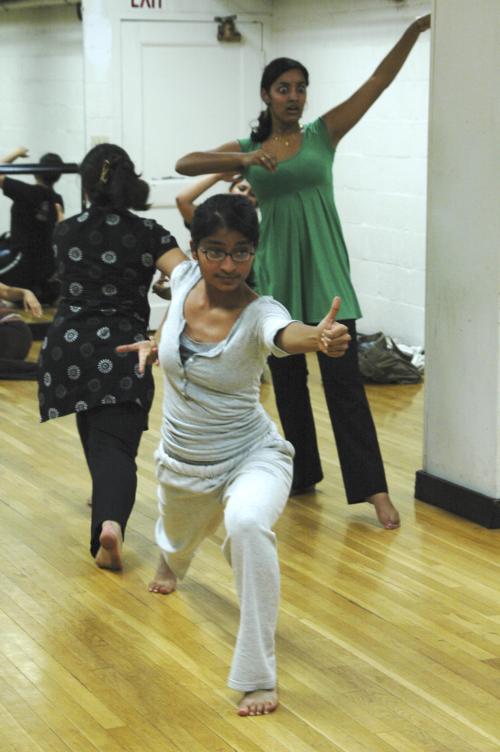
News
Summers Will Not Finish Semester of Teaching as Harvard Investigates Epstein Ties

News
Harvard College Students Report Favoring Divestment from Israel in HUA Survey

News
‘He Should Resign’: Harvard Undergrads Take Hard Line Against Summers Over Epstein Scandal

News
Harvard To Launch New Investigation Into Epstein’s Ties to Summers, Other University Affiliates

News
Harvard Students To Vote on Divestment From Israel in Inaugural HUA Election Survey
‘Kalpanam’ Carries on Long Tradition of Indian Dance
Harvard South Asian Association preserves Indian culture through dance

A Bharatanatyam dancer does not simply learn a few steps in order to perform an Indian dance drama. She must study for years to master “nritta” (pure dance) and “abhinaya” (pure emotion). “Kalpanam: Classical Imaginations” hopes to showcase the level of technique required for Indian classical dance, while expressing a sense of responsibility for preserving tradition.
Tomorrow, the Harvard South Asian Association will bring Bharatanatyam, as well as other South Asian dance styles, to Lowell Lecture Hall in its third annual production of “Kalpanam.” Dance pieces will be interspersed with instrumental and vocal music from both Northern and Southern India.
While “Kalpanam” is a relatively new Harvard tradition, it partakes in a long history of Indian music, dance, and drama.
“Indian classical dance is something that has been carried down for thousands of years,” says co-director Amrapali Maitra ‘10.
The first part of the program will consist of a collection of short, individual acts. There are eight different styles in Indian classical dance. “Kalpanam” will feature three of them, including Bharatanatyam, one of the oldest and most common styles.
One of the dance numbers will showcase two other styles, Odissi and Kuchipudi. Odissi is a unique type of dance from Eastern India; like Bharatanatyam, it was originally performed in temples. Kuchipudi is an energetic and graceful style that shares some elements with Bharatanatyam, but is newer and intended for a wider audience.
A dance drama in the Bharatanatyam style will be performed during the second part of the production.
“Nowadays there are a lot of fusion dances,” said Prerna Martin ‘09, the other co-director of “Kalpanam.” “Dance drama is an attempt on our part to keep the tradition going so that people are exposed to it.”
Each year, production staff choose a different theme for the dance drama.
This year, it will present episodes from a classic Hindu epic, the “Ramayana.” The central figures in the dance drama are Rama—an avatar of Vishnu—and his wife Sita. The story explores the themes of good and evil, as well as the definitions of the ideal man and ideal woman in Indian society.
“Hindu epics give moral lessons about what your duty is,” says Martin.
Although Indian classical dance is a complex art form and requires a trained eye to pick up on its intricacies, students involved with “Kalpanam” say that anyone can enjoy its beauty.
In the past, the show has drawn an equal number of people familiar with Indian dance and those who had never experienced Indian classical dance or music before.
“I’d never seen Bharatanatyam before I came here and now I’m producing a show,” says co-producer Ritambhara Kumar ’09.
Even though Kumar is a newcomer, a great deal of training goes into the ability to communicate a narrative through dance.
Maitra has been studying Indian classical dance since childhood and says that when she came to Harvard, she did not expect to find many other women who would be equally interested and involved in the art form.
“It’s like ballet. You can’t just decide to do it in a week,” Martin says. “Most of the dancers have been dancing for 11, 12, 13 years.” She also notes that there is a lot of pressure from parents who encourage their daughters to pursue the training.
Kumar adds that because of the role that dance plays in Indian culture, “Kalpanam” dancers and crew face an additional challenge.
“It is a big responsibility to portray it in the correct form,” she says.
Want to keep up with breaking news? Subscribe to our email newsletter.
